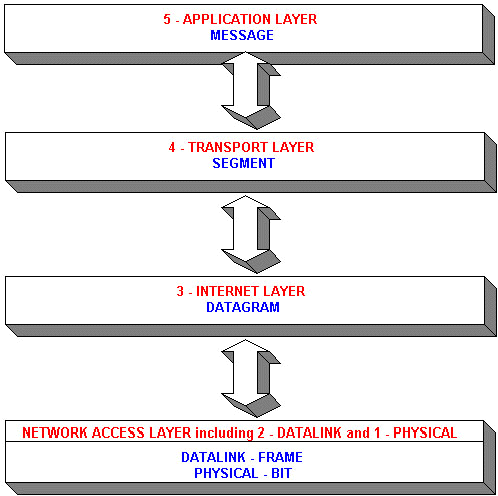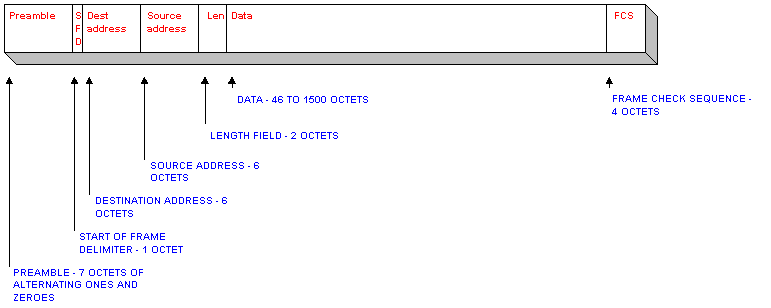

What are frames?
A frame can be defined as the unit of data
transferred across the network, defined at
the datalink (network access) layer of the protocol stack.
What are packets?
A packet can be defined as the unit of data
at any layer of the protocol stack, prior
to, or after transmission.
Is it really that simple?

It's
not really quite that simple because some people prefer to further define
data in terms of each layer of the TCP/IP protocol
suite.
-
Data at the application layer is called
a message.
-
Transport layer data is sometimes referred
to as TCP or UDP segments.
-
At the internet layer, data is sometimes
talked of in terms of IP, ARP and RARP datagrams.
-
The datalink layer data is referred to
as frames.
-
At the physical layer, data is sometimes
referred to as bits - the lowest common denominator.
As data descends the source protocol stack, successive levels encapsulate
the data with additional information. After a frame has been received at
its destination, successive layers then de-encapsulate
the data as it travels up the destination protocol stack.
Therefore, a packet can be discussed in terms of its subsets - messages,
segments and datagrams.
Frames are not discussed in any other terms, they simply encapsulate
the data with a header and addressing information.
What does a frame look like?
The diagram below illustrates the IEEE 802.3 frame:

An octet is defined as eight
bits of data.
The ethernet Version 2.0 frame is similar to the IEEE 802.3 frame.
For a device to be 802.3 compliant, it must be able to communicate with
legacy Version 2.0 devices.
What does each field do?
-
Preamble - alerts
and synchronises the network interface card (NIC)
to the incoming data.
-
Start of frame delimiter
- indicates the start of the frame.
-
Destination address
- the MAC (medium access control) address of the destination NIC. Three
types of address exist:
-
Unicast - addresses a single device.
-
Multicast - addresses a group of devices.
-
Broadcast - addresses all devices.
-
Source address -
the MAC address of the source NIC.
-
Length - indicates
the length of the data field.
-
Data - carries the
data being transferred. It has a maximum limit to stop devices sending
too much data at any time. This gives fair access to the media to all devices.
-
Frame check sequence
- provides a cyclic redundancy check
(CRC) on all data held in the frame. CRC is an error detection mechanism
generated by the NICs. The source NIC generates a 32 bit CRC figure from
the address, type and data fields. The destination NIC does the same calculations.
If the destination NIC calculates the same figure for the CRC as the source,
the frame was received error-free.
Tell me more!
![]()

